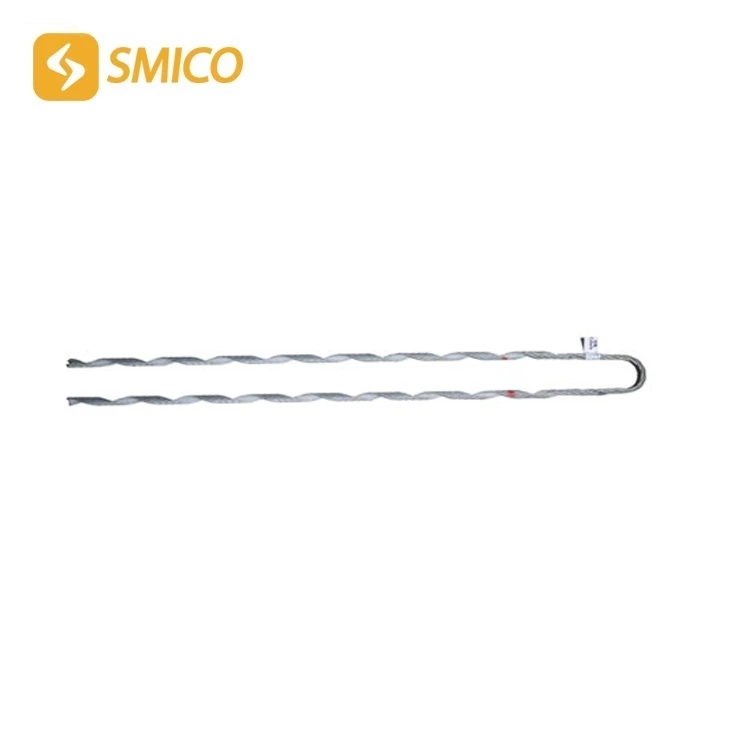Compared With Other Traditional Forms Of Hardware, Pre-twisted Wire Hardware Has Its Own Unique Features
Compared with other traditional hardware, armor rods hardware has its unique features: strong fatigue resistance; simple and fast installation, strong consistency; high efficiency and energy saving; wide adaptability and good corrosion resistance. 1.armor rods for acsr tension clamps are divided into: ADSS optical cable, OPGW optical cable, various types of wires, wires, ground wires, etc. for transmission lines. Tension clamps are widely used in optical cable lines and transmission lines to connect with poles and towers. They are mainly used to connect with terminal poles, tension poles, connecting poles, and poles with an angle greater than 25°. The tension wire can be connected with V-bolts and ground anchors. 2.armor rods transmission line Suspension clamps are divided into: ADSS optical cable, OPGW optical cable, various types of transmission line conductors, ground wires and other suspension clamps. It is widely used to connect ADSS, OPGW, conductors, ground wires with straight pole towers and corner pole towers. The clamp can reduce the static stress of the optical cable at the suspension point, improve the vibration resistance of the optical cable, overcome the dynamic static pressure stress of wind vibration, and ensure the allowable bending radius of the optical cable, reducing the transmission loss of armour rod signals in the optical cable. 3. Anti-vibration hardware a. Anti-vibration hammer: The anti-vibration hammer is used in conjunction with the protective wire. The anti-vibration hammer is a synthetic friction resonance damper. It reduces the stress of the optical cable/conductor by dispersing the wind vibration on the overhead optical cable/conductor at the rear part, thereby eliminating fatigue, so as to ensure the life of the optical cable/conductor. It is easy and quick to install. b. Anti-vibration whip: Made of high-strength, aging-resistant, and highly elastic modified PVC plastic, it is divided into two parts: clamping and anti-vibration. The anti-vibration part uses the damping effect of wind vibration to consume and weaken the vibration energy of the optical cable, thereby protecting the optical cable. 4. Grounding wire: Mainly used for grounding armour rod in transmission line cables to provide a path for short currents. 5. Down-lead clamp for pole towers: Used to fix optical cables when leading down optical cables on optical cable splicing towers and terminal towers and connecting optical cables. 6. Excess cable rack: Used to place excess optical cables on the upper reel of optical cable splicing towers, and used in conjunction with optical cable joint boxes. 7. Pre-twisted sheath wire: Used to protect cables from armor rods conductor vibration, clamp pressure stress, friction wear, arcing and other damage. It disperses the stress on the wire and can increase the service life of the cable. Among them, the pre-twisted sheath wire in the power fittings can also be used as a repair strip. 8. Pre-twisted conductor splicing strips: They are divided into conductor splicing strips, jumper splicing strips, steel core aluminum stranded wire full tension splicing strips, T-type connecting strips, steel stranded wire pull/ground wire splicing strips, etc. Compared with traditional splicing tubes and explosion-pressure tubes, they are easy to install, have good splicing quality, strong corrosion resistance, light weight, and elastic pre-twisted wire, without affecting the original mechanical and electrical properties.

